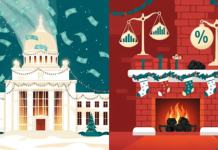As we dive into this week’s edition of The Market Pulse, the focus is squarely on the shifting dynamics of the market in response to Federal Reserve Chair Jerome Powell’s recent Jackson Hole speech. After two years of anticipation, Powell signaled a potential pivot towards rate cuts—a move that investors have been eagerly front-running. But what does this mean for the S&P 500, especially as we confront two critical hurdles: high valuations and the emergence of bearish engulfing patterns in key indexes?
With the S&P 500 trading at elevated PE ratios, it’s worth asking: Are rate cuts already priced in? Historical comparisons to the 1994 soft landing campaign suggest that today’s scenario is markedly different, with valuations nearly double those of the past and EPS growth estimates beginning to decline. As we step into a week of potential volatility, it’s crucial to consider whether the market has already run its course or if more surprises lie ahead.
In this edition, we’ll unpack these trends and explore their implications. From the historical significance of Thursday’s bearish engulfing patterns to the potential impact of upcoming economic data, this week’s insights are designed to make you smarter and more informed. Plus, don’t miss our fun fact on market patterns—it’s a reminder that even in the world of high finance, a little humor goes a long way.
This Week I Learned…
Front-Running the Fed: What History Teaches Us About Market Pricing
This week, we learned that the market’s anticipation of rate cuts isn’t a new phenomenon, but the context around it is ever-changing. Investors have a history of front-running the Fed, pricing in expected monetary policy changes well before they materialize. This strategy was evident in the lead-up to Powell’s Jackson Hole speech, where the market had long been banking on a dovish shift.
But here’s the kicker: Are today’s high valuations really justified by these expectations? Back in 1994, the S&P 500 had a much lower PE ratio, yet the market was buoyed by accelerating EPS growth. Fast forward to today, and we see the opposite—high valuations paired with slowing growth. This suggests that while the market may be right to anticipate rate cuts, the current pricing might not hold up if growth continues to decelerate.
This week, we learned that history doesn’t always repeat itself in the markets—it rhymes. And as investors, it’s our job to decipher those rhymes to avoid being caught off guard.
The Fun Corner
Bearish Pattern Walks into a Thursday…
Here’s a market joke for you: Why did the bearish engulfing pattern cross the road? To signal a sell-off—but not until Wednesday.
Okay, so maybe market patterns aren’t known for their comedic timing, but they do have a way of keeping investors on their toes. As we’ve seen recently, bearish engulfing patterns in the S&P 500 have become something of a Thursday tradition, showing up regularly and often leading to a positive Friday, only for the real action to unfold mid-week.
It’s a reminder that while patterns can be predictive, timing is everything. So the next time you spot a bearish pattern, just remember: Wednesday’s where the magic happens.
Has the Market Already Priced In Powell’s Pivot?
The recent market turmoil was a perfect example of how today’s stock markets can quickly swing from fear to optimism. Recent market developments highlight that despite the sharp sell-off, several factors contributed to the swift recovery—yet these same factors leave stocks exposed to future shocks.
After reaching record highs during the summer, the stock market took a hit when a softer-than-expected U.S. jobs report in early August sparked recession fears. This was further compounded by a weakening yen, underwhelming tech earnings, and the tightest U.S. monetary policy since the Great Financial Crisis. Despite this, the sell-off was brief. Why? The jobs report, though disappointing, wasn’t recessionary, and central banks, particularly in Japan, stepped in to stabilize the situation.
Moreover, subsequent U.S. economic data turned out better than expected, with strong retail sales and falling inflation, which eased fears of an imminent downturn. But this rapid recovery has a downside. Stock valuations remain high, and the market is still vulnerable to bad news, especially regarding interest rate expectations.
Investors need to be cautious. As Allen notes, many of the issues that triggered the recent sell-off are still unresolved, making the market susceptible to further volatility. In short, while the market has shown resilience, it’s not out of the woods yet.
The Last Say
Valuations, Patterns, and the Powell Pivot
As we close this edition of The Market Pulse, it’s clear that we’re at a critical juncture in the markets. Powell’s signaling of rate cuts has been met with enthusiasm, but it also raises the question: Has the market already priced in too much optimism? With the S&P 500’s high valuations and the emergence of bearish engulfing patterns, there’s a real possibility that we could see increased volatility in the weeks ahead.
The history of bearish patterns on Thursdays suggests that mid-week could bring more drama, especially as we await further economic data and corporate earnings reports. Meanwhile, the disconnect between current valuations and slowing EPS growth only adds to the uncertainty.
As we head into the next trading week, investors would do well to remember the lessons of the past. While rate cuts may be on the horizon, the market’s reaction could be anything but straightforward. Stay vigilant, stay informed, and remember that in the markets, timing is everything.


























